Family : Labridae

Text © Giuseppe Mazza

English translation by Mario Beltramini
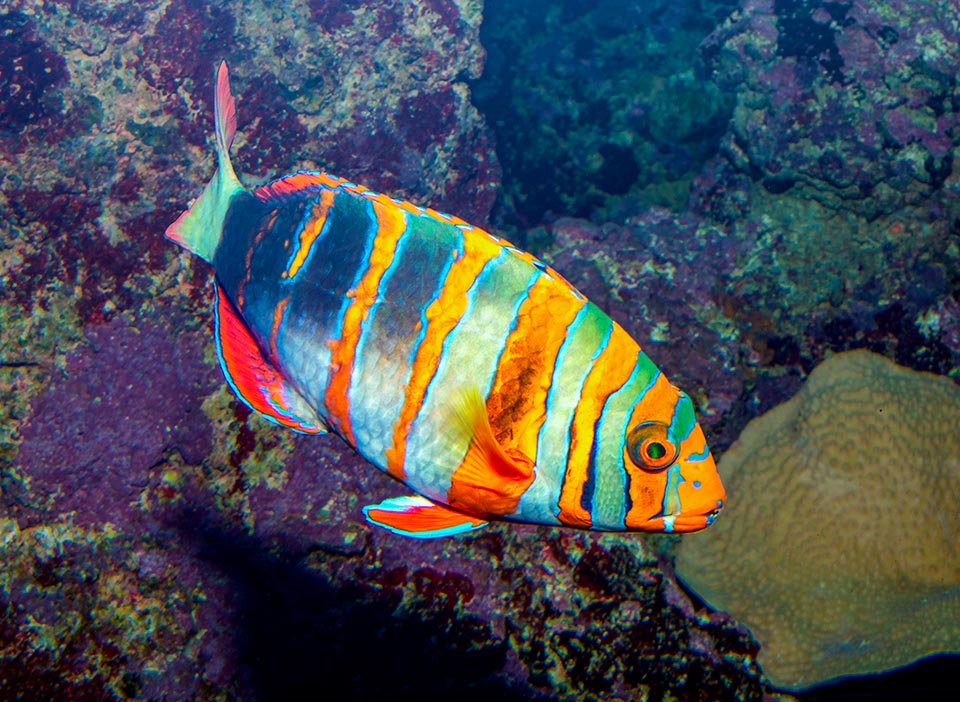
The Harlequin tuskfish (Choerodon fasciatus) has a vast but fragmented distribution in the western Pacific © Giuseppe Mazza
Choerodon fasciatus (Günther, 1867), known as Harlequin tuskfish, belongs to the class of Actinopterygii, the ray-finned fishes, to the vast order of the Perciformes and to the multi-coloured family of Labridae, rich of 71 genera and 549 species shaving very often surprising liveries.
The name Choerodon, given to about 26 species of this family, comes from the Greek term “Χοιρός” (khoiros), pig, pork, and “ὀδών” (odon), tooth, with reference to the protruding canines that evoke those of the wild boar.
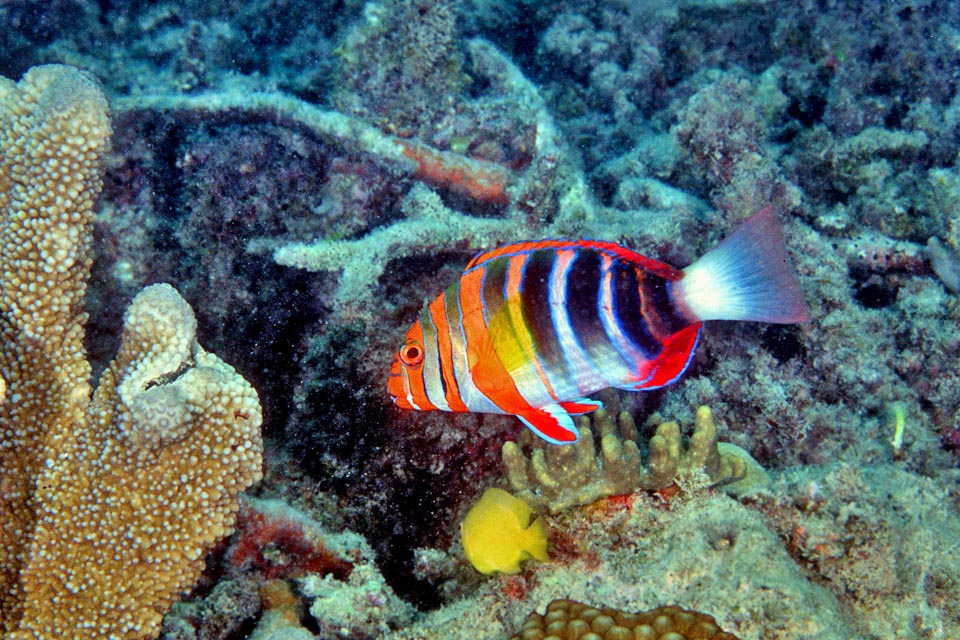
Up to 30 cm long, it swims between 5 and 35 m of depth along the reefs outer slopes, rich in prey, grottoes and hideaways © Pauline Walsh Jacobson
The specific term fasciatus, bandaged in Latin, is an obvious reference to the showy vertical bands of its livery.
Zoogeography
The Choerodon fasciatus has a vast but quite fragmented distribution in western Pacific. We find it, strating from north, in Japan, RyuKyu Islands, Taiwan, Vietnam, Philippines, Palau, Micronesia, Papua New Guinea, Australia, Vanuatu, New Caledonia and finally in Lord Howe Island.
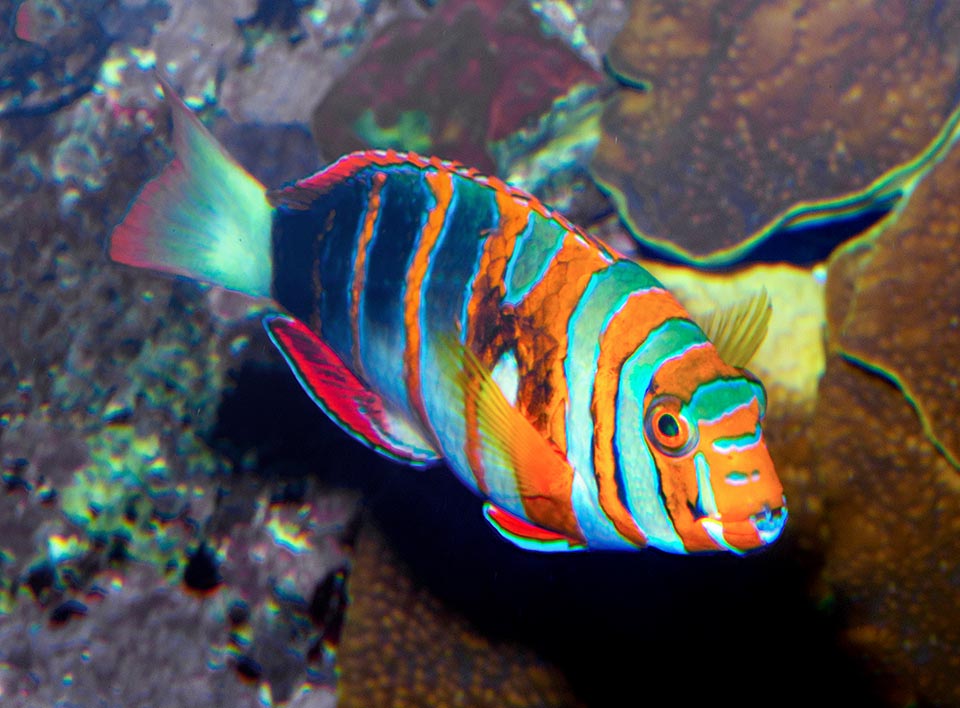
With its blue protruding canines it breaks the mollusks shells and the crustaceans and sea urchins shells but it also eats small worms and starfishes © Giuseppe Mazza
Ecology-Habitat
It lives among the madreporic formations, moving in 5-35 m of depth, where the water is at 25-28 °C. It often swims along the outer slopes of the reefs, rich of preys, grottoes and hideaways.
Morphophysiology
The Harlequin tuskkfish can reach the length of 30 cm with a decidedly gaudy and unmistakable look. The body, tending to be oval and flat laterally, in fact displays, on a background gtreenish pale azure in the first half and dark in the other, 6-7 bright orange vertical bands, emphasized by a light blue border.
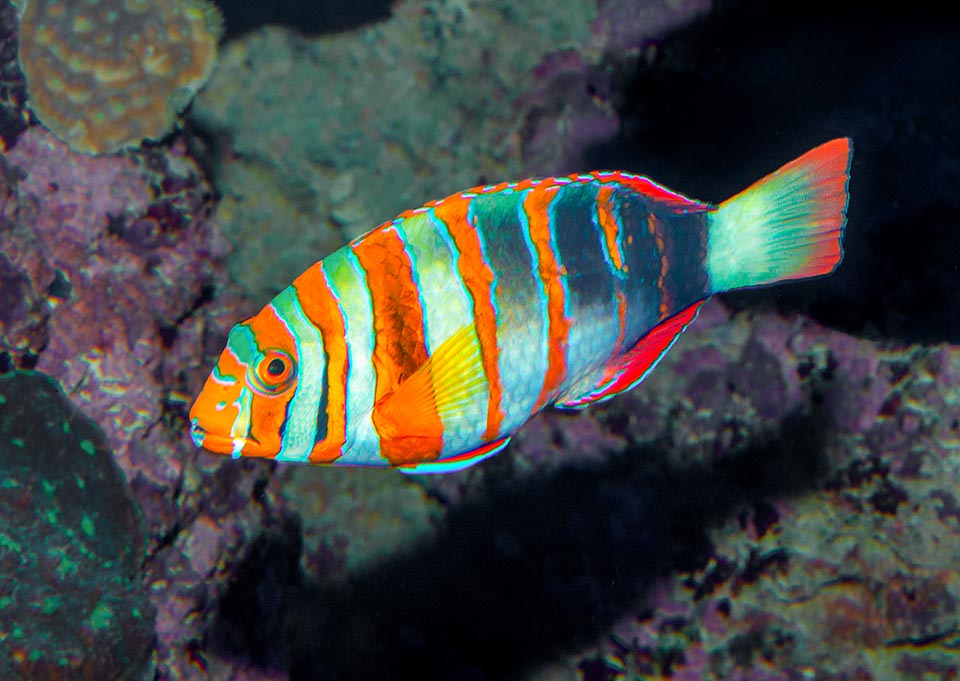
It is a protogynous hermaphrodite species that is with females that transform, growing, in males, but apart the size it does not display a clear sexual dimorphism © Mazza
The snout and the iris have the same orange tonality with analogous patterns, and so the head disappears into the set of colours, bewildering the predators, attracted by a less vital organ such as the caudal fin, whitish at the base and then red with blue border, but what is more striking in the head is the pale blue of the gums and, even more, of the 4 protruding canines arranged staggered interlocking to break, like pincers, shells and carapaces.
Ethology-Reproductive Biology
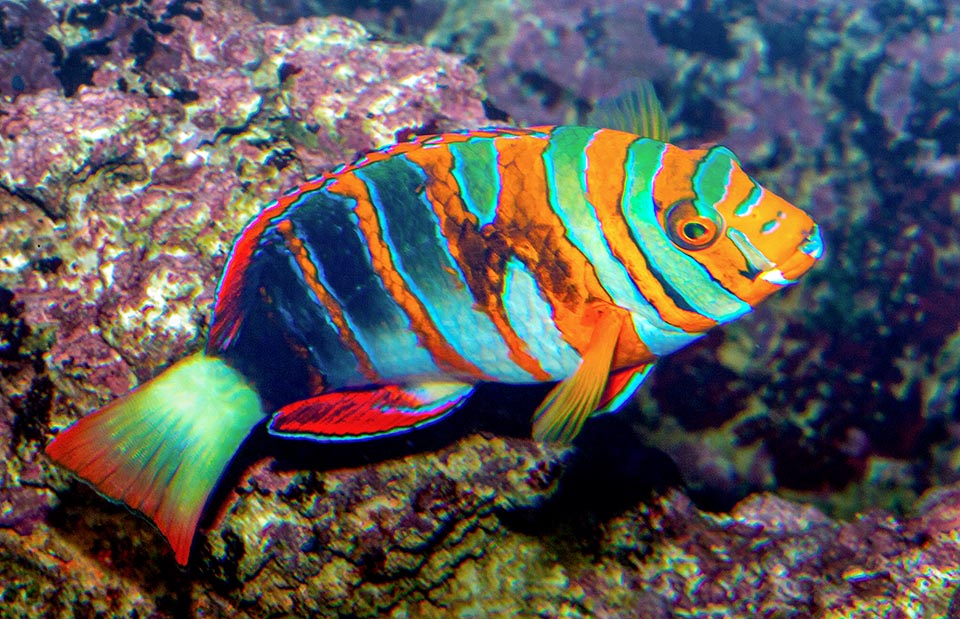
The couples, mostly stable for several reproductive seasons, rise dancing to the surface to spawn and fecundate the eggs entrusted to the currents © Giuseppe Mazza
Choerodon fasciatus eats all what it can find in the crevices of the reef: mainly that molluscs, crustaceans, small worms, starfishes and small sea urchins. Like many wrasses this is a protogynous hermaphrodite species, that is, with females that, growing, transform in males, but apart from the fact that these are much bigger, there is not any evident sexual dimorphism.
For the reproduction, couples form, at times stable for several reproductive seasons. The fecundation usually occurs a little after the sunset. The future spouses then go up to the surface with a particular way of swimming. They draw circles, one above the other, swimming abreast, till when they emit at the same time the eggs and the fecundating liquid. There are no parental cares an the progeny is entrusted to the currents
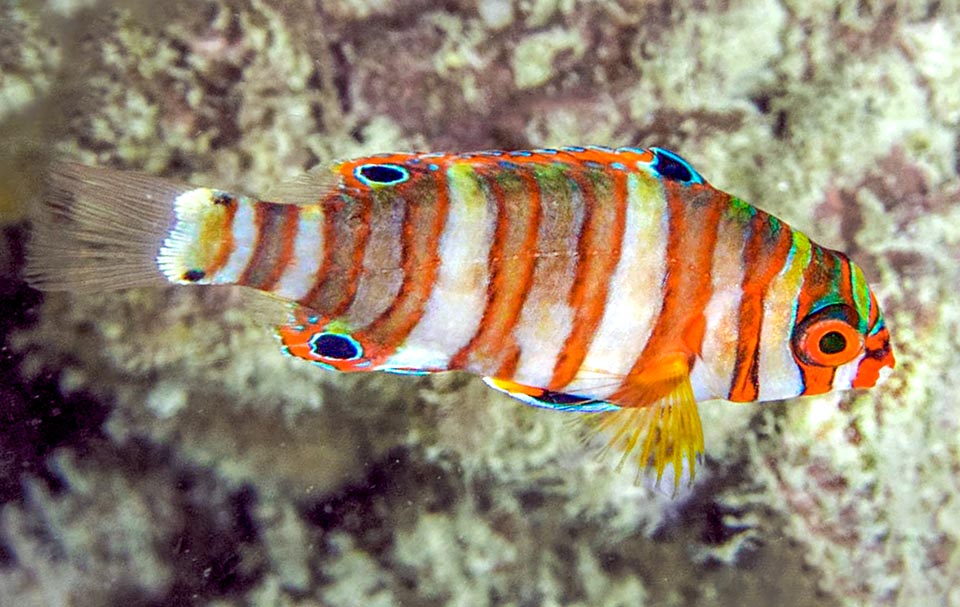
A young with showy ocelli to confuse the ideas of the predators. Choerodon fasciatus is a shy fish that in aquarium eats after the others, but in nature is not endangered © Rick Stuart-Smith, Reef Life Survey
The Harleguin tuskfish is a particularly shy and careful fish. It hides at the first sign of danger and in aquarium it does not dare to eat before the other guests of the pool.
The resilience of the species is good with a possible doubling of the populations in 1.4-4.4 years and the index of vulnerability to fishing, very low, marks just 20 on a scale of 100.
Since 2010 Choerodon fasciatus has therefore been listed as “LC, Least Concern” in the IUCN Red List of endangered species.
Synonyms
Xiphochilus fasciatus Günther, 1867; Lienardella fasciata (Günther, 1867); Lepidaplois mirabilis Snyder, 1908; Choerodon balerensis Herre, 1950.
→ For general information about FISH please click here.
→ For general information about BONY FISH please click here
→ For general information about CARTILAGINOUS FISH please click here.
→ To appreciate the BIODIVERSITY of BONY FISH please click here.
→ To appreciate the BIODIVERSITY of CARTILAGINOUS FISH please click here.
